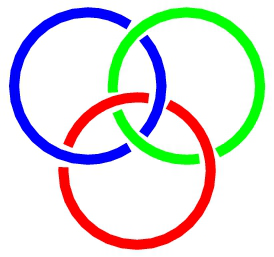Orateur
Prof.
Martial Ducloy
(Université Paris 13)
Description
he long range interaction between atoms and material surfaces or nanobodies is a case study of a pure quantum system interacting with macroscopic or mesoscopic systems. This field is of increasing importance owing to the fast development of nanoscience and nanotechnologies. The confinement of atoms inside a nano-size space strongly alters the internal properties of the atomic system and its response to external excitation, e.g. light irradiation. In addition to surface-induced energy level shifts and spontaneous emission enhancement/inhibition, there is atom symmetry break due to the anisotropy of the surface near-field, inducing energy level mixing, population transfer, or selective surface-enhancement of forbidden lines… [1] The dramatic influence of surface-guided waves (like morphology-dependent resonances of nanobodies, or surface polariton modes of dispersive materials) on atom-surface van der Waals interactions has also been considered.
Experimentally there are two distinct approaches to the investigation of the properties of atoms in interaction with surfaces and nanostructures. High resolution laser spectroscopy at gas-dielectric interfaces (like reflection spectroscopy, or transmission spectroscopy of sub-micrometer vapour cells) allows one to monitor the properties of selected radiative atomic states in a confined environment. Resonant coupling between excited atoms and surface polaritons has led to the first observation of repulsive van der Waals surface forces, as well as the dramatic modification of decay channels and branching ratios of excited states [2]. The influence of thermal surface excitations is now under scrutiny [3]. On the other hand, high resolution momentum spectroscopy with atomic beams gives access to the monitoring of long-lived states interacting with surfaces and nanobodies. Beam-surface diffraction experiment, and transmission of velocity-selected metastable beams trough nano-slits or nano-gratings, has allowed one to study surface-induced symmetry break, and inelastic atom diffraction produced by energy level mixing [4]. Implications in cavity QED, as well as applications to atom optics and interferometry at the nanoscale [5] will be discussed. The conditions of existence of long-range, weakly bound atom-surface complex will be considered.
[1] See, e.g., M. Ducloy, in "Nanoscale Science and Technology" (Kluwer, The Netherlands, 1998) 235; V. V. Klimov et al., Kvantovaya Elektronika [Quantum Electronics] 31, 569 (2001); D. Bloch and M. Ducloy, Adv. At. Mol. Opt. Phys., 50, 91 (2005)
[2] H. Failache et al., Phys. Rev. Lett. 83, 5467 (1999); ibid. 88, 243603 (2002); Eur. Phys. Journal D23, 237 (2003)
[3] M.-P. Gorza et al, Eur. Phys. Journal D, 40, 343 (2006)
[4] M. Boustimi et al, Phys. Rev. Lett. 86, 2766 (2001) ; J.-C. Karam et al, Europhys. Letters 74, 36 (2006)
[5] J. Grucker et al., Eur. Phys. Journal D, 47, 427 (2008)
Auteur principal
Prof.
Martial Ducloy
(Université Paris 13)

